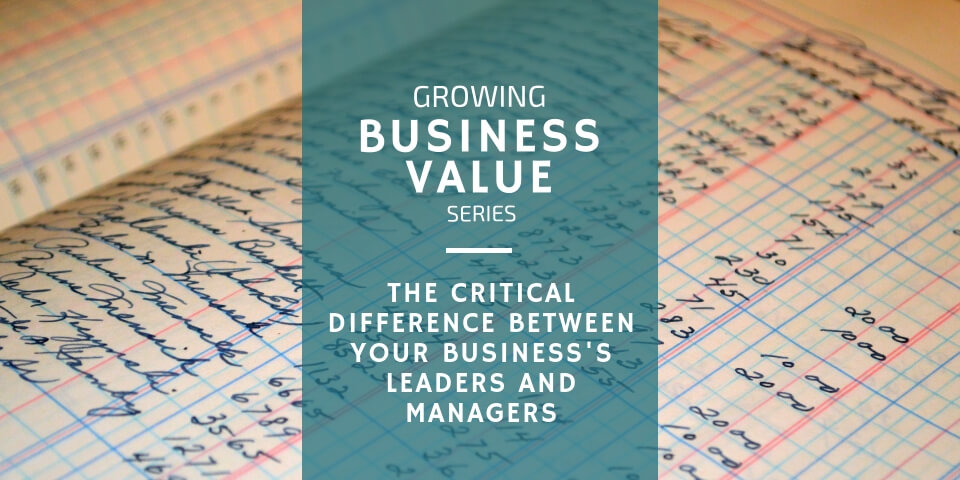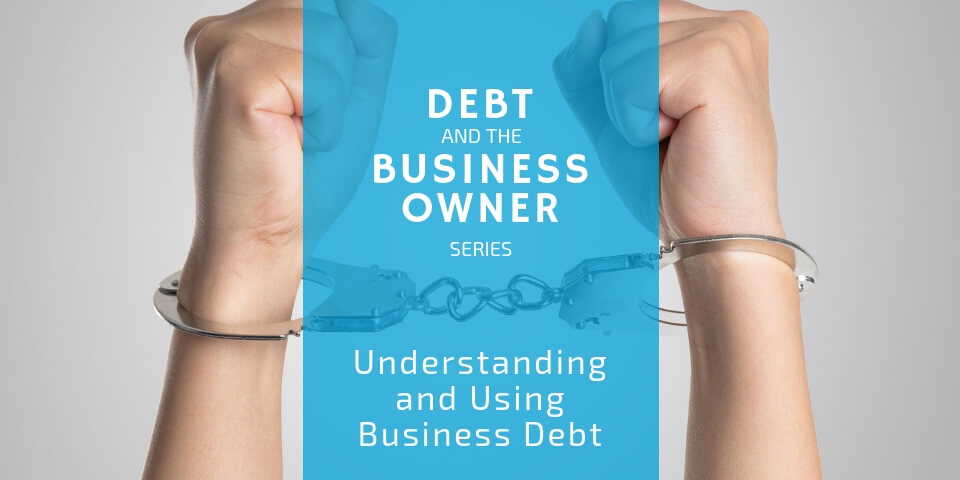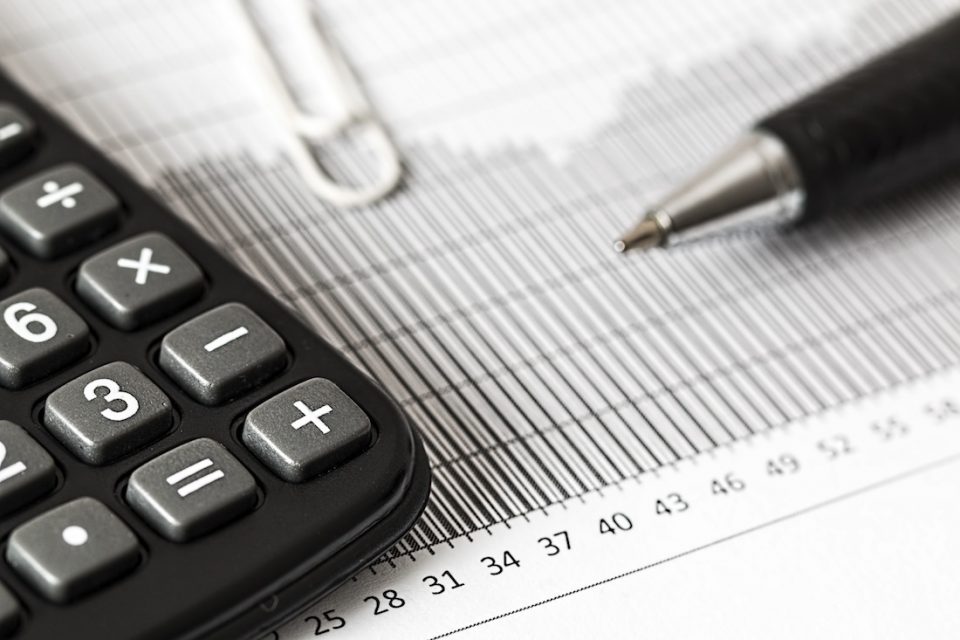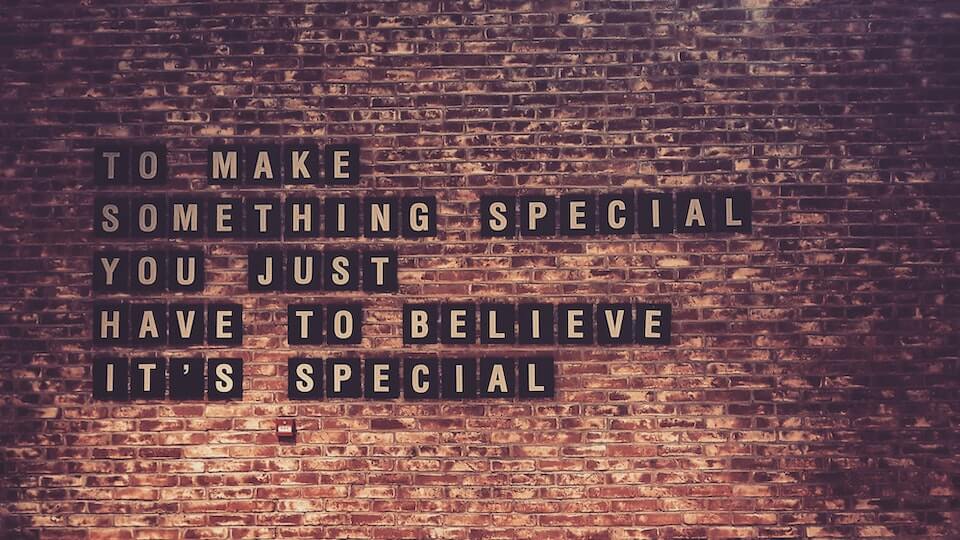
6 Key Differences Between Small Business Leaders and Managers
January 15, 2019
How Does Leadership Add Value to Your Small Business?
January 17, 2019Understanding and Using Business Debt Strategically

Small businesses are the backbone of America, however, carrying so great a load means carrying a great deal of debt as well. In fact, 49% of small businesses are in some sort of debt. Yet, unlike most personal debts, business debts can sometimes be necessary. As a business owner, you may have experienced the need to take on and use debt for many different reasons.
I realize you make decisions that can impact the lives of many. I also understand being frugal and making wise decisions goes well beyond your own personal debt—others are counting on you, which is why I want to ensure you have all the tools you need to conquer and leverage your business debt when necessary.
As a business owner myself, I often get frustrated with the radio talking heads who give cookie-cutter recommendations for debt reduction. They spout out impersonal and nonspecific ideas. Very seldom do they speak directly to me, a business owner. So, friends, today is our—the business owners’—day. I’m speaking to you!
Types of Business Debt
Let’s take a look at the various types of debt you may encounter in the business world.
Business Lines of Credit (B-LOC)
The Business Line of Credit, sometimes called a B-LOC, is an extremely common debt among business owners. These debts are revolving in nature, meaning you can borrow money and pay it back over and over again. I generally recommend most business owners have a Business Line of Credit. Here’s why.
Assume you just completed a major project and have not received the payment for your services. Ideally, you’d have enough cash in the bank to cover your expenses. However, you just made a massive purchase to help grow your business strategically at the time when the payment for your services is delayed. Due to this purchase, you are running tight on cash. Now, to add salt to the wound, your payroll is due and with cash on the low end in your business account, there just isn’t enough in the bank to cover the payroll. This is where a Business Line of Credit can help. You simply borrow from the line to cover the payroll and then pay the money back once you receive payment from your customer.
Now, you will want to use a line of credit for short-term expenses only. The idea is to use the line and pay it off, use the line and pay it off, with the hope of eventually building up your cash reserves in your business account to the point where a line of credit is seldom used.
Real Estate Loans
Let’s talk about another common business debt—real estate loans. From time to time, businesses may need to purchase a piece of real estate or make tenant improvements on their current location. Just like borrowing money to buy a house, there may be times you need a loan to purchase property for your business. Perhaps you need land to build. Or maybe you’re a tenant and the building needs improvements. Still yet, if your business has grown, then you may need a new location altogether. Whatever the reason, real estate loans are important tools for business owners.
When dealing with business real estate loans, it is often best to make the down payment as low as possible and finance your terms for as long as possible. This allows you to leverage your cash—meaning instead of tying up all of your cash in a short-term loan, you can deploy your cash strategically throughout your business.
Here’s an example. Let’s say your business is growing at a rate of 10% per year. If your real estate loan has an interest rate of 5%, your excess cash could grow your net worth faster if you deploy the money back into your business. So, do you really want to take cash that could earn a 10% return in your business to reduce a 5% debt? Generally, a real estate loan will not be at the top of your payoff schedule for any business debt you are working to eliminate.
Equipment Loans
Now, this next debt can be a touchy one! Equipment loans. This is one debt I rarely condone. I personally believe no debt is good debt when it comes to equipment loans. Many times, people will borrow money for equipment they deem necessary—and sometimes it really may be. However, all too often they simply get suckered into buying the latest and greatest from a slick salesperson. And chances are the equipment they already own would continue helping them grow their business.
Here’s the key to equipment loans—life expectancy. If you have a piece of equipment with a life expectancy of 10 years, then it doesn’t make sense to try to pay it off in warp speed—especially to the detriment of your cash flow. Now, on the flip side, let’s say you have a computer and its life expectancy is three years. Then clearly, you do not want to finance this purchase with a 10-year note.
Basically, you will need to pay off your equipment loans in relation to the equipment’s life expectancy. If you do not know the life expectancy of your equipment, you can turn to the IRS for a depreciation schedule for most types of equipment. If the schedule allows the equipment to be depreciated within 10 years, then your loan term should not exceed this standard. Understand that the primary key to this type of debt is to match the equipment loan term to the equipment life. Then work to pay off the equipment before it becomes obsolete.
Business Purchase Debt
Next on the list—business purchase debt. Perhaps you want to acquire another company to help your business grow. Maybe making that purchase would double or triple the size of your company. This is when using business debt could become a good tactic for growth.
Or maybe you’re an entrepreneurial doctor finishing up your residency and you’re ready to dive in headfirst into business ownership. While saving enough cash to purchase a medical practice would be an awesome feat, it could possibly take you decades to do so. I don’t think you want to go out on your own after 10-15 years of practice. More than likely you want to do it early and for many reasons, which means using a loan to purchase an $800,000 practice might be a necessity.
Leveraging Business Debt
Now, that we know what the common types of business debts are, let’s look at some reasons why you may want to leverage debt in your business.
Business debts, unlike most personal debts, can be used for increasing the net worth, or value, of your business. Like I mentioned earlier, moving locations could change the dynamics of your company and bring in an influx of business. Or maybe you need to capitalize on some research you completed that shows you will increase your bottom line if you implement these tactics, but you don’t have the cash flow to do so. In that case, turning to a loan could be your best option. Many times, personal debt is used for consumption purposes, whereas business debt, if used properly, should be an income-producing debt.
Now, perhaps you are covered up in business debt or maybe you are just getting your feet wet and wanting to decipher which debts you should utilize. Whichever path you are currently on, you still need a plan to pay down your debt. Quite frankly, people don’t want debt hanging over their heads or holding them back from reaching their full potential.
Eliminating Business Debt
So, what are the best ways to knock out your business debt?
1. Create a budget!
If you don’t already have a business budget, shame on you. That could be part of the reason you are finding yourself in so much debt. Just like a personal budget, a business budget can help keep you on track and actually free up money to pay off your debts.
2. Cut any unnecessary expense.
Your business could be wasting money in areas you aren’t paying attention to, especially if you don’t have a budget. When you eliminate useless spending, you free up cash to allocate toward your debts.
If you’re using your business debt in a productive manner, then you should be able to formulate a plan to increase your revenue. After all, extra income means additional money to pay down your debts.
Perhaps you could benefit from a lower interest rate on a business credit card. Or maybe you need to refinance a loan. Whatever the debt, most companies would prefer to work out some sort of plan as opposed to your business going belly up and them not seeing a dime.
Other options for reducing your business debts may not be ones you really want to consider.
4. Cut charitable giving.
If you’re like me, you’re a charitable person, which means you enjoy sharing your wealth with others. Unfortunately, in the lean times, you may need to cut back on your charitable giving in order to pay down your debt. Once you are in the black again, then you can always go back to giving.
5. Consolidate your debts.
Another last-ditch effort could be debt consolidation. I’m not a fan of this option, but if you lower your interest rate or shave years off a loan term, then it could be beneficial for helping you reach your business goals.
Here’s the thing with business debt—it’s not always bad. It can be necessary. Sure the goal is to pay it off or keep it at a minimum. However, debt in your business could be a potential money-making investment if properly utilized. Business debt is different than personal debt because of the reasons for the debt. Unlike personal debt, business debt is seldom used for consumptive purposes.
For example, I have often seen young entrepreneurs borrow money to start a business. With their new business, I have seen start-ups quickly gain traction, create new jobs and dramatically impact their community. In this case, the debt was merely a tool to help them accomplish their mission.
Using Business Debt to Your Advantage
As you can see, debt can be advantageous. Here are a few ways to ensure the debts you use in your business meet those criteria.
1. Don’t sell your equity.
First, be leery of taking on a partner if you didn’t start out with one. No matter how great your business is doing, there will be lean times. It’s inevitable! When lean times come, don’t sell your equity by adding partners to capitalize your business. Take on debt instead. It’s much easier to get rid of a loan payment than a business partner. Getting rid of a partner can get nasty and turn into a legal mess that you DO NOT NEED!
2. The ROI is greater than the debt.
Another instance where debt could be opportune for your company is when the return on investment (ROI) will bring in a greater profit than the cost of the debt.
Here’s an example. I have helped business owners borrow funds to make strategic purchases involving other businesses—businesses that complement their current structure. In the cases I have personally helped with, I have seen the return on the purchase three to five times greater than trying to fund an increase in business out of cash flow alone.
3. You need to purchase inventory.
Again, debt just isn’t always a bad option in the business realm. Perhaps you own a seasonal business and need the capital to purchase inventory for the upcoming year. So you take out a loan to cover your inventory and now you’re ready to go for your seasonal rush. Pre-purchasing your inventory could yield higher profits since you bought your inventory out of season and possibly at a time when it was at its lowest price.
The point is debt is not evil. Debt is neutral. It’s about how you use debt that matters. Now, you need to understand a few more things about business debts before we wrap this up.
How Business Debt Affects Your Credit
While your business finances are often separate from your personal finances, the two can easily intertwine in the credit world. Let me explain.
As an entrepreneur, you have likely relied or are currently relying on your personal credit score to establish some of your business credit. Obviously, in the early years, this makes sense. However, you DO NOT want it to stay this way.
Setting up the proper business structure can help you avoid this. If you run your company as an LLC, S-Corp, or C-Corp, your business will have its own credit score. Your business credit score is called a PAYDEX® score. This score is issued by Dun & Bradstreet and it rates how quickly your business pays its bills, provides a delinquency predictor score, a financial stress score, a credit limit recommendation, and a risk rating. Experian and Equifax also report credit ratings for small business as well, and this is commonly referred to as your Business FICO score.
Additionally, when it comes to credit, you cannot control when your business debt will affect your personal credit score—especially when you are a sole proprietor. After all, if you are a sole proprietor, you are the business—whatever you personally do reflects on your business and whatever your business does reflects personally on you.
Another point to take note of, if you personally guarantee a business loan, no matter the structure, and your company defaults, your creditors can come after you, the individual.
Understanding and utilizing business debt is imperative to running and growing a successful business. So, if you have debt, know that it is not necessarily a bad thing.
Recognize that there are pros and cons to having those debts, though. One pro could be profiting from a better location for your company, while a con could be missing out on valuable tax planning advantages because of your debts.
Strategically plan your business debt. If you need to eradicate some of your debt, both personal and business, to move to the next level in your business life, then work on getting aggressive with paying down your debt. The key to keeping business debt Financially Simple™ is to be calculated in utilizing debt.
RELATED ARTICLE: Strategies for Business Owners to Get Out of Debt




